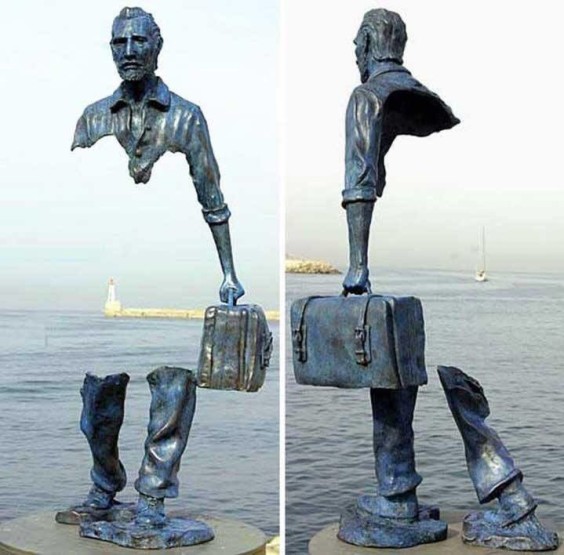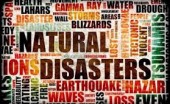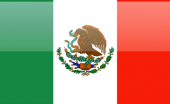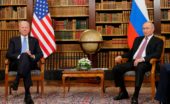Re Ian Bremmer 'Could third-party candidates upend the 2024 US election?' 3 April The current political movement in the USA…
World-wide migration/refugees
Written by Diana Thebaud Nicholson // November 23, 2023 // Immigration/migration // Comments Off on World-wide migration/refugees
Why Al Jazeera will not say Mediterranean ‘migrants’
The word migrant has become a largely inaccurate umbrella term for this complex story.
What is the Dublin System?
UN’s François Crépeau on the refugee crisis: ‘Instead of resisting migration, let’s organise it’ (22 April 2015)
 An amazing piece of sculpture by the artist Frances Bruno Catalano, which symbolizes the vacuum created by being forced to leave your land, your life, your people… for any reason.
An amazing piece of sculpture by the artist Frances Bruno Catalano, which symbolizes the vacuum created by being forced to leave your land, your life, your people… for any reason.
Finland gets more EU staff to handle Russia border crisis
(Reuters) – European Border and Coast Guard Agency Frontex said on Thursday it will send more officers to Finland next week as the Nordic nation seeks to limit the number of asylum seekers coming via Russia.
Helsinki has accused Moscow of funnelling some 700 migrants to the border in the last two weeks from nations such as Yemen, Afghanistan, Kenya, Morocco, Pakistan, Somalia and Syria, a charge the Kremlin has denied.
2022
9 March
Ukraine: The good, bad and ideal refugees
Yvonne Su, Assistant Professor in the Department of Equity Studies, York University, Canada
(The Conversation) Although all neighbouring European Union countries have pledged to accept refugees from Ukraine, as people flee across borders, a complicated story emerges of who are perceived and received as good, bad and ideal refugees in modern Europe.
Take Poland — a country that is being praised globally for accepting over one million refugees from Ukraine — only months ago it was condemned for serious human rights violations after engaging in pushing back and firing tear gas at asylum seekers and migrants from the Middle East and Africa driven to the border by Belarusian forces.
The 1951 Refugee Convention was initially created to protect European refugees in the aftermath of the Second World War. It defines a refugee as a person who has fled their country because of a well-founded fear of persecution on one of five grounds: race, religion, nationality, membership of a particular social group or political opinion.
Over the past 50 years, the convention’s relevance has been questioned. It is hard to see it as relevant when European countries close their doors to refugees fleeing conflict from Afghanistan and Syria but open them to Ukranians.
What’s happening in Ukraine has unveiled the existing hierarchy of refugees that exists in modern Europe as portraits of the good, bad and ideal refugees emerge.
Ukrainian refugees have been described as “white,” “intelligent,” “educated,” “civilized,” “middle-class,” “well-dressed” and, most importantly, unlike refugees from “Iraq or Afghanistan.
The bias towards Ukrainian nationals as the only worthy refugees was so strong that the E.U. had to clarify that people from third countries who lived in Ukraine and wanted to travel on to their home countries were also welcome.
Lately, many reports have surfaced of African and Indian international students being denied access to trains and border crossings. Reports have emerged of Ukrainian border officials segregating refugees by race, beating them with rods and giving preferential treatment to Ukrainian nationals. There are also accusations of preferential treatment happening in refugee programs abroad.
2021
9 September
As some countries welcome Afghanistan’s refugees, others want to keep them out
Despite recent mass airlifts, the country’s neighbours will bear brunt of refugee crisis
(CBC) As pictures of desperation were beamed from Kabul’s airport last month, showing thousands of Afghans trying to escape the Taliban and get out however they could, French President Emmanuel Macron went on national TV.
France, he said, needs to “protect itself from a wave of migrants” heading for Europe, declining to say, for now, if it will take more Afghan refugees.
In another corner of the European Union, Croatian President Zoran Milanović declared “all of them should find their place in the United States.”
“It’s no longer 2015,” he said, referring to Europe’s last refugee crisis, when 1.3 million people sought asylum there — led by a wave of those fleeing the war in Syria, but which also included many Afghans.
A smaller but steady flow of Afghan migrants has continued ever since, as fighting persisted in the country, then accelerated as the U.S. announced it was preparing to leave after 20 years of conflict
2016
Hungarians overwhelmingly reject migrant quotas, vote invalid
(Reuters via Globe & Mail) Almost all Hungarians who voted in Sunday’s referendum rejected the European Union’s migrant quotas but turnout was too low to make the poll valid, frustrating Prime Minister Viktor Orban’s hopes of a clear victory with which to challenge Brussels.
Hungary’s maverick right-wing leader, whose hardline policy on migration has been criticized by human rights groups but is popular at home, nevertheless said EU policy makers should heed the “outstanding” referendum outcome.
Along with other ex-Communist countries in Eastern Europe, Hungary opposes a policy that would require all EU countries to take in some of the hundreds of thousands of people seeking asylum in the bloc after arriving last year.
23 September
Breaking down the UN summits on refugees and migrants
What did the international community achieve this week? And was it enough? We asked experts to weigh in.
(Open Canada) A recent United Nations (UN) report found that … the bulk of refugees under UNHCR’s mandate were residing in low- and middle-income countries neighbouring hotbeds of conflict, namely Syria, Afghanistan and Somalia. And while both summits this week primarily focused on refugees seeking asylum in countries other than their birthplace, the number of internally displaced people is nearly double that of those able to cross into another country.
United Nations Summit for Refugees and Migrants
On Monday, the UN General Assembly held its first-ever meeting on Addressing Large Movements of Refugees and Migrants in hopes of creating a blueprint to guide the international response to the mounting refugee crisis. Delegations from 193 member states swiftly adopted the New York Declaration for Refugees and Migrants, which General-Secretary Ban Ki-Moon deemed “a breakthrough.”
The declaration supports the protection of the human rights of all refugees and migrants, regardless of status, guarantees that displaced children will have access to education within a few months of settling in a country, and pledges to increase humanitarian and development assistance to countries bearing the most weight of the crisis.
Regarding refugee burden-sharing, something advocates have said is in need of urgent reform, the declaration sets out to “expand the number and range of legal pathways available for refugees to be admitted to, or resettled in, third countries,” thereby allowing refugees to move more freely instead of being stuck in the country they first crossed into.
Notably, the declaration seeks to get the ball rolling on the creation of a global compact on migration by 2018 that will deal with “all aspects of international migration,” as well as the development of separate voluntary guidelines on the treatment of migrants.
Also on the UN’s 2018 to-do list is a global compact on refugees, which will be based on a comprehensive refugee response framework that aims to make the burden-sharing of refugees more equitable.
22 September
Migrant crisis: EU ministers approve disputed quota plan
EU interior ministers have approved a controversial plan to relocate 120,000 migrants across the continent over the next two years.
It will see migrants moved from Italy, Greece and Hungary to other EU countries.
[Note: the quotas are for the numbers of refugees to be removed from the countries concerned – not how many they should accept! Orban has apparently argued that Muslims simply can’t be integrated into Christian Hungary and that virtually all refugees currently there should be relocated elsewhere. RR]
Romania, the Czech Republic, Slovakia and Hungary voted against accepting mandatory quotas.
After the vote, Slovakia’s prime minister said he would not accept the new quotas.
Finland abstained from the vote. Poland, which had opposed the proposal, voted for it.
19 September
UN issues unprecedented declaration on refugee crisis
(PBS Newshour) An estimated 65 million people worldwide are considered refugees and migrants. On Monday, the United Nations General Assembly’s began its first summit on the growing global issue. The session yielded an unprecedented declaration of commitment to organization and cooperation in supporting refugees. William Brangham interviews Filippo Grandi, UN High Commissioner for Refugees, about its importance.
The General Assembly, meaning all the states in the world, have issued a declaration which actually will be known as the New York Declaration, committing themselves to protecting, assisting refugees, but also finding new ways the organize better the response to refugee crisis.
“… the declaration is the preamble to a global compact that we hope we will be able to issue in two years’ time.
‘ … for a long time, we have struggled with the resources. We have been able to give the basics to refugees, like blankets, medicine, some food, but what refugees want also is a future, is education, is jobs. And it is an effort to try to expand our support to them that this declaration will help us carry out.”
World leaders approve plan to address refugee crisis
3 September
The Trump Immigration Idea That Almost Makes Sense
(The New Yorker) … he called for the creation of “a new immigration commission . . . to select immigrants based on their likelihood of success in U.S. society, and their ability to be financially self-sufficient. . . . To choose immigrants based on merit, skill, and proficiency.”
This is an idea that exists in the non-paranoid, non-racist, non-alt, non-right part of our public discourse: we should admit immigrants, at least in part, based on how their arrival would affect the economic well-being of already-present Americans.
If we could engineer things just right, only allowing in those who have skills that are lacking in the U.S. workforce or who seek to fill the professions for which we have shortages, we could add immigrants and make the country richer, and no American would have to lose a job or get a cut in pay.
We shouldn’t be tempted by the idea that we can engineer the economically perfect immigration policy. Like all forms of social engineering, it will fail. We can only plan based on our limited and flawed present-day understanding. And our plans will become congealed laws whose errors will only appear over time. This is why it is crucial that the people in office who write our immigration laws are people whose judgment we trust.
It’s immigration, stupid: The irresistible politics of keeping people out
By Nahlah Ayed
Trump, May, Sarkozy ramp up their anti-outsider rhetoric
Immigration, illegal or otherwise, has become a cross-Atlantic obsession: obscure citizenship and immigration rules and challenges have become routine subjects for election debates as well as pub arguments.
Barbed wire
Even Trump’s aggressively renewed promise to build a wall along the border with Mexico does wilt somewhat in the face of Hungary’s popular, anti-asylum seeker, barbed-wire fence, which has been fully operational for more than a year and eminently successful at keeping foreigners out.
But it’s the discussion of an exit strategy from “bad” immigration that is all the rage now. And Trump’s bluster is just the topper in what’s been a banner week for anti-outsider rhetoric.
2 September
The death of Alan Kurdi: one year on, compassion towards refugees fades
Toddler’s death opened European hearts and policy towards refugees, but 12 months on those changes have proved temporary
(The Guardian) A year ago, Alan’s tragic death seemed to have shifted the political discourse on refugees. European leaders appeared to have been shocked into forming more compassionate policies, while previously hostile media outlets took a more conciliatory tone.
With rightwing populists on the rise across the continent, and a perceived connection between migration and terrorism, Europe has gradually abandoned the humanitarian approach of last winter. Austria, which was once a key German ally on migration policy, now wants an Australian-style approach that could see Greece formally used as a giant holding bay for asylum seekers, just as Canberra controversially uses the island state of Nauru to detain people trying to reach Australia. Even Sweden, which previously gave Syrians indefinite asylum, has reined in its generosity.
The Balkan humanitarian corridor has shut: Tusk was the man who declared it closed. The relocation scheme has proved dysfunctional: the rest of Europe has accepted just 5,142 people from Greece, instead of the 66,400 promised. And if the EU had its way, most of the few people still arriving on the Greek islands – the weekly numbers are now in the hundreds, rather than the tens of thousands – would now be deported back to Turkey under the EU-Turkey migration deal.
14 August
The story of Mohammad and his dog is a modern parable about borders
On the Croatian-Serbian border last September, I met a Syrian biomedical engineer called Mohammad who was trying to get to Germany. He’d been beaten to it by his pet dog. The dog, Mohammad said, had a pet passport that allowed him to fly to Berlin. Mohammad himself had a human passport that had only let him get as far as Turkey.
Even today, borders often exist only as a concept, rather than the robust entities that politicians present them as. When I crossed the Croatian-Serbian border last autumn, a few hours before Mohammad the biomedical engineer, there was nothing that marked where Serbia stopped and Croatia started. On either side, there were identical fields of stubble. It was only when I looked on my GPS map – and saw how the blue dot showing my position had moved west of a slim black line – that I realised I’d crossed into Croatia.
Many borders also exist only in certain contexts – blocking the passage of people but not things. The majority of humans – or at least those of us born in the developing world – cannot legally cross most borders. But all of us can circumvent those same barriers by sending products, money, information, insults, emails, photographs, and ideas to almost any country on the planet.
Are borders “the worst”? That’s a subjective debate. But objectively speaking, borders are definitely an invention.
16 May
Syrian refugee entrepreneurs boost Turkey’s economy
(Financial Times) A wave of refugees is taking advantage of the opportunities and relative ease of doing business in Turkey — to the benefit of the country’s economy.
Since 2011, 4,000 new businesses have been set up by Syrians or Syrians with Turkish partners — and the number is accelerating.
According to the Economic Policy Research Foundation, an Ankara-based think-tank, 1,600 were set up in 2015, with 590 more established in the first three months of this year alone.
13 May
Why Kenya Announced An Unrealistic But Alarming Plan To Rid The Country Of Refugees
Aid groups warn that forcing hundreds of thousands of refugees out would create instability and a humanitarian disaster
(World Post) When Kenya threatened last Friday to shut down the largest refugee camp in the world and rid the country of over half a million refugees, many people initially questioned whether it was serious.
The practicalities just didn’t make sense. Over 350,000 people live in Dadaab, a network of camps in Kenya’s northeastern desert, and around 150,000 more live in Kenya’s second refugee camp, Kakuma.
It would take a huge amount of money and manpower to dismantle the thousands of tents, huts and buildings in Dadaab, which today include shops and cinemas, churches and mosques. Even more difficult is the prospect of forcibly uprooting hundreds of thousands of people, some of whom have spent their whole lives in the camps. …
Kenya dissolved its Department of Refugee Affairs overnight. Then, it formed a task force on Wednesday to manage the closure of Dadaab (without mentioning Kakuma or other refugees in the country), and said it was putting $10 million toward the effort. A Kenyan interior ministry official said the first group of refugees would leave Dadaab by November, and the camp would be fully closed by next May.
4 March
Migrant crisis: Migration to Europe explained in seven charts
(BBC) More than a million migrants and refugees crossed into Europe in 2015, sparking a crisis as countries struggled to cope with the influx, and creating division in the EU over how best to deal with resettling people.
The vast majority arrived by sea but some migrants have made their way over land, principally via Turkey and Albania.
Winter has not stemmed the flow of people – with 135,711 people reaching Europe by sea since the start of 2016, according to the UNHCR.
Which countries are migrants from?
The conflict in Syria continues to be by far the biggest driver of migration. But the ongoing violence in Afghanistan and Iraq, abuses in Eritrea, as well as poverty in Kosovo, are also leading people to look for new lives elsewhere.
Former UNRWA leader Grandi becomes UN refugee chief
Filippo Grandi, the former head of the United Nations Relief and Works Agency, has become UN High Commissioner for Refugees at a time when refugee numbers are at record highs. Grandi succeeds Antonio Guterres, who served for a decade. Grandi says UNHCR is grappling with “multiple conflicts and resulting mass displacement, fresh challenges to asylum, the funding gap between humanitarian needs and resources, and growing xenophobia.” The Associated Press (1/4), Deutsche Welle (Germany) (1/1)



